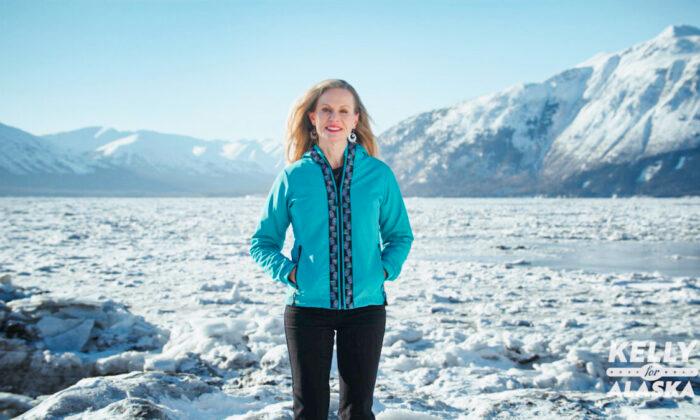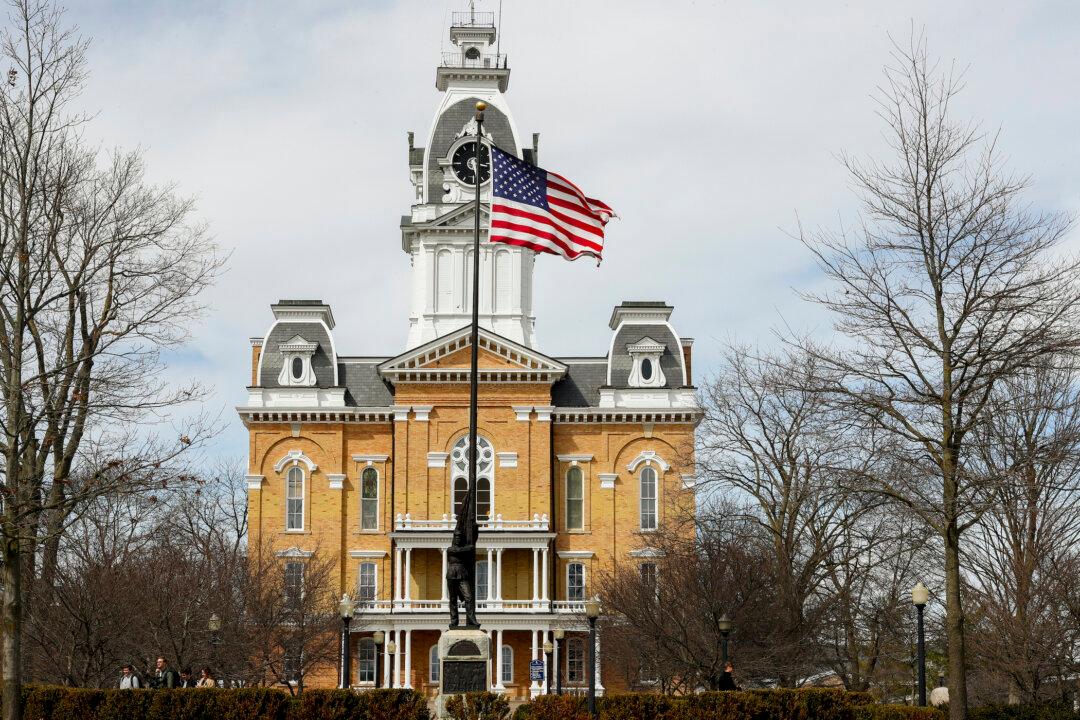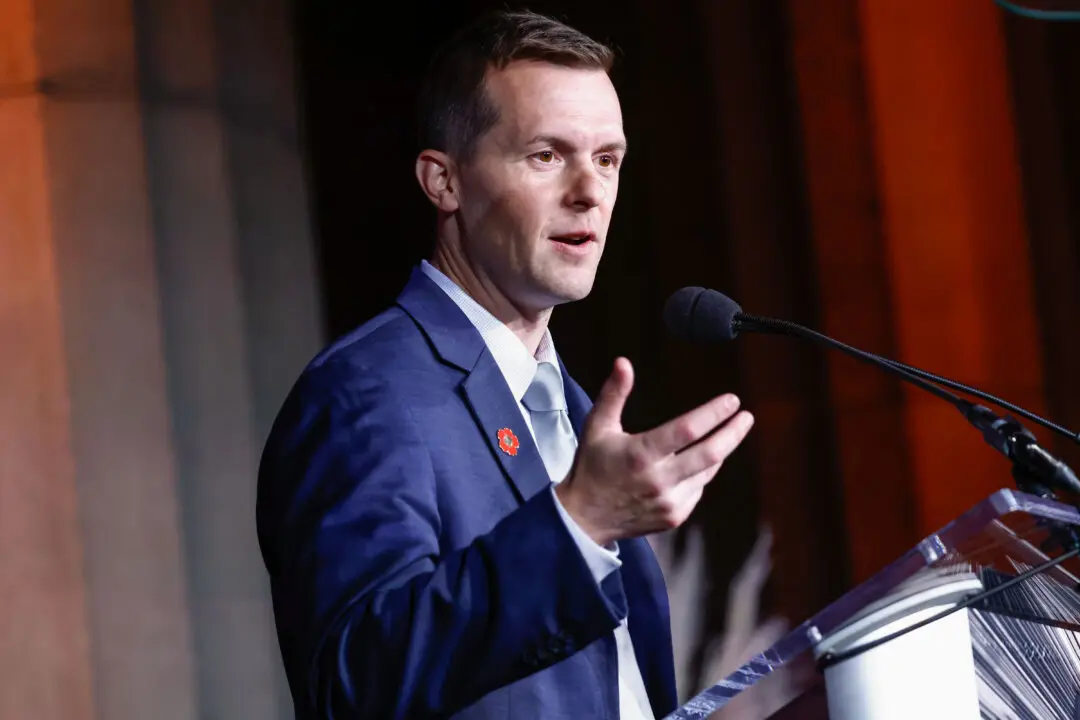Alaska Republican U.S. Senate candidate Kelly Tshibaka, who is challenging Sen. Lisa Murkowski (R-Alaska) in the state’s primary election in August, claims that the longtime incumbent’s vote to confirm Deb Haaland as interior secretary has weakened Alaska, contributing to skyrocketing gas prices and foreign dependence by impeding the production of oil, gas, rare earths, and other vital commodities.
Tshibaka, who has received the endorsement of former President Donald Trump, made the comments in an exclusive interview with The Epoch Times at the Alaska Sustainable Energy Conference, a three-day meeting on geothermal, nuclear, solar, wind, hydropower, and other alternative energy technologies.
One crucial challenge in any green transition is the potential dependence on China.
China and its state-owned enterprises dominate the mining and processing of rare earths and other materials used in solar panels, wind turbines, and electric vehicles (EV).
Even in the United States, green energy may be uniquely vulnerable to Chinese pressure. MP Materials, which owns the only rare earth mine in the United States, is itself partly owned by a Chinese firm, Shenghe Resources.
MP Materials recently received a $35 million grant from the Department of Defense for its new rare-earth separation facility.
“We should not be subsidizing out things we could be doing in America by benefiting Chinese workers, Chinese dads, and Chinese moms when we’re putting Americans out of work,” Tshibaka said, noting that Alaska’s rare earth reserves are a crucial asset to the United States.
“When you’re dependent on a foreign enemy for an energy solution in the United States, you have created a national security problem.”
She said the Biden administration’s actions on Alaskan oil and gas, including the cancellation of the Cook Inlet lease sale and the suspension of leases in the Arctic National Wildlife Refuge, have helped fuel the current global energy crisis and jeopardizes the well-being of everyday Alaskans.
“Moms can’t feed their kids and workers literally cannot fill up their cars with gas because our president has declared an all-out assault against this state and specifically against our fossil fuel industry, which is the backbone of our economy,” Tshibaka said. “Who’s directing this assault on us? Joe Biden. Who’s the chief enabling officer of it all? Lisa Murkowski.”
Roughly a quarter of Alaskan jobs and half of its total economy ultimately stem from the oil industry, according to an analysis from the Alaska Resource Development Council.
In particular, oil has historically provided an outsized share of the state’s general fund revenue.

Energy Information Administration (EIA) statistics show that oil from Alaska’s North Slope sold for an average of $84.94 per barrel in February 2022, up from $52.37 in February 2021.
Statistics supplied to The Epoch Times by the Office of Governor Mike Dunleavy show that North Slope oil was trading at $119.71 on May 26.
That’s the highest price since 2008. With the West Coast under strain and OPEC refusing to step up production, North Slope crude is some of the most expensive oil in the world.
Statistics from the State of Alaska show that North Slope is producing 495,225 barrels per day. While that’s an increase from early 2022, it’s still well below the region’s output as recently as a decade ago.
Even as Alaska profits from its hydrocarbon exports, many of the state’s most isolated and rural communities are hampered by their reliance on diesel to power the generators that provide electricity. When the temperature drops, the demand for that energy only intensifies.
AAA reports that diesel is selling for an average of $5.31 per gallon, up significantly from an average of $3.09 per gallon at the same time last year.
Tshibaka said the Biden administration’s executive orders and other actions have helped create a situation where people in those locales “are choosing between feeding their families and heating their homes.”
Speakers and vendors at the conference outlined potential solutions for such communities, which already suffer from energy vulnerabilities and scarcity during the best of times.
Microreactors such as eVinci could provide one megawatt to tens of megawatts of electric power, enough for multiple small villages.
Nuclear energy companies at the conference said they anticipate their microreactors will debut in four to six years, depending in part on the pace of approval from the Nuclear Regulatory Commission (NRC).
Tshibaka told The Epoch Times that she wants to cut red tape for that industry. She also wants to offer incentives to it, such as those benefiting wind, solar, biofuels, and other energy categories.
“They’re asking for the same kind of tax breaks that other energy industries have,” she said.
Yet even as the conference highlighted possibilities from tidal power to geothermal, Tshibaka stressed the importance of traditional energy for Alaska, at least in the near term.
“How many green energy jobs do you see up here at this point? Yes, we’d like to move into the future. This future is not our present,” she said.
“There is a mass exodus out of the state right now,” Tshibaka said.

Tshibaka, who served in the Office of the Director of National Intelligence under Presidents George W. Bush and Barack Obama, said she wants to build additional national security assets and infrastructure in Alaska. She cited its strategic location near Russia, North Korea, and China.
The state already has a number of military installations, including Joint Base Elmendorf-Richardson in Anchorage.
According to Tshibaka, as Arctic temperatures rise and previously icebound seas thaw, Alaska could capitalize on its proximity to Asian markets to ship goods that are now mostly dispatched from the West Coast.
“When we don’t have to use icebreakers anymore, because there’s no more ice, you can ship 365 days a year,” she said.
Tshibaka also wants to help the tech industry gain a foothold in the last frontier.
She told The Epoch Times that she has spoken with information technology companies about sitting data centers in Alaska instead of in the lower 48.
The reason? Those data centers need to be kept at relatively low temperatures—colder than those in much of summertime California, anyway.
Alaska’s naturally cold climate could meet that need without using as much energy, saving money while also reducing emissions.
Tshibaka declined to name any of the companies with whom she said she had spoken.
Representatives for Amazon, widely considered the world’s top spender on data centers, didn’t respond to a request for comment by press time on the potential placement of data centers in such an environment. Murkowski also didn’t respond to a request for comment by press time.
The Department of the Interior declined to comment.





